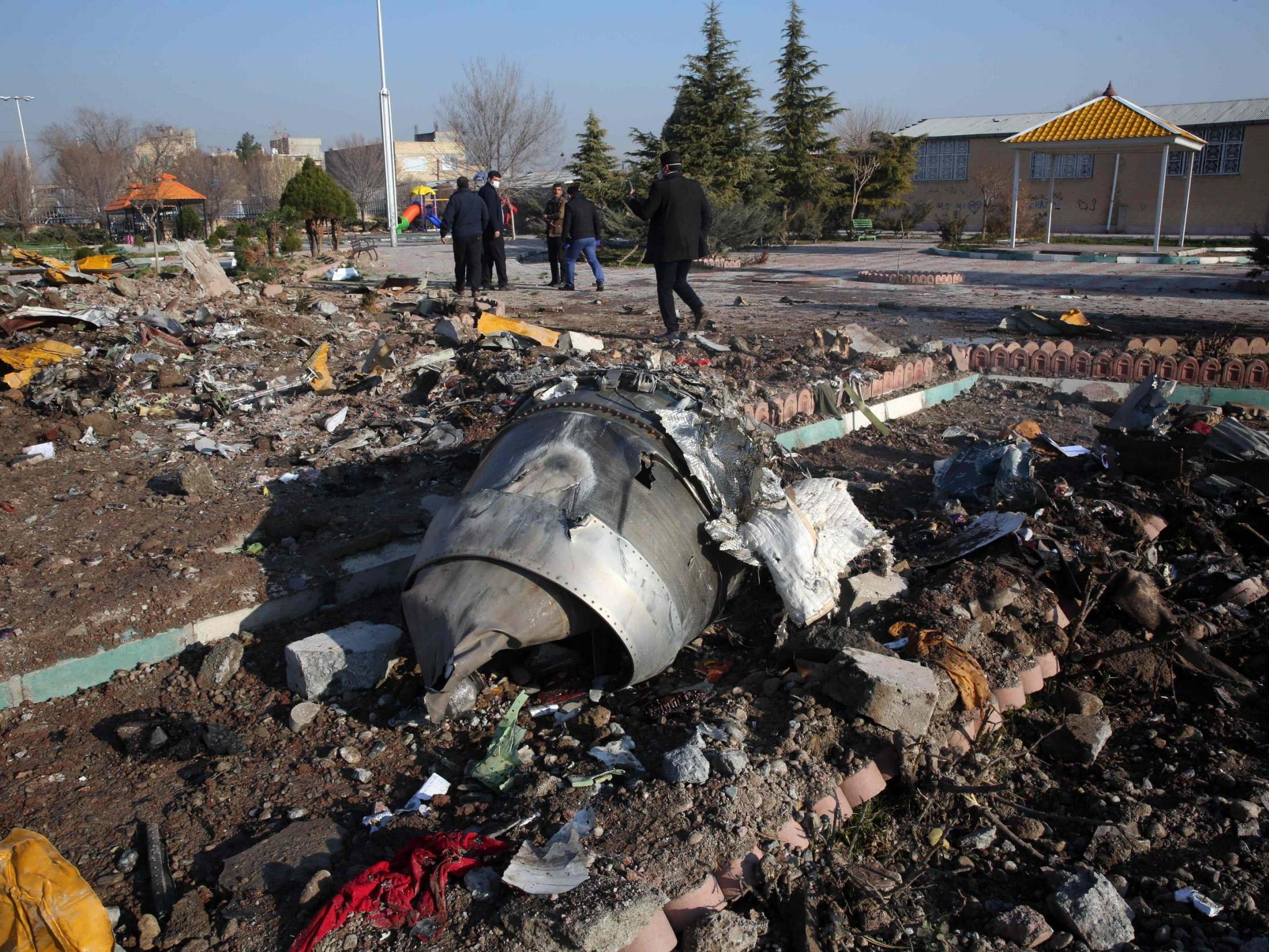This website uses cookies so that we can provide you with the best user experience possible. Cookie information is stored in your browser and performs functions such as recognising you when you return to our website and helping our team to understand which sections of the website you find most interesting and useful.

Did an Iranian missile inadvertently kill 176 people aboard a scheduled flight from Tehran to Kiev?
All 176 passengers and crew died when flight PS752 came down west of the Iranian capital. It was the worst airline tragedy since the first crash involving a Boeing 737 Max, in Indonesia in 2018, which killed 189.
Justin Trudeau, the Canadian prime minister, said there was evidence that the Ukraine International Boeing 737-800 was downed by a surface-to-air missile in the early hours of 8 January.
The tragedy happened hours after Iran carried out an attack on two US targets across the border in Iraq, in response to America’s assassination on 3 January of General Qasem Soleimani.
Pentagon sources have said they have evidence that two infra-red “blips” indicate missiles were fired after the Ukrainian plane took off, and that an explosion was detected shortly afterwards.
Iran has denounced the reports as “propaganda”. The head of Iran’s civil aviation authority, Ali Abedzadeh, has flatly rejected the claims, and reiterated the original claim that a technical malfunction was responsible. He said: “Scientifically, it is impossible that a missile hit the Ukrainian plane, and such rumours are illogical.
”The plane, which was initially headed west to leave the airport zone, turned right following a problem and was headed back to the airport at the moment of the crash.”
International investigators are assembling in Iran to try to find out what happened – a task that will be more difficult if reports that the flight recorders are damaged and that crash site has been bulldozed prove correct.
But if the Western claims are accurate, it will mean that military shootdowns of commercial airliners are now one of the leading causes of death for passengers – with Ukraine involved in three tragedies.
Aviation’s accident rate is in long-term decline, with the 2010s the safest decade in history.
The worst disaster in that decade was the shooting down of Malaysia Airlines flight MH17 in 2014. All 298 passengers and crew died when the Boeing 777 en route from Amsterdam to Kuala Lumpur was shot down by a Russian-made missile while flying over rebel-held eastern Ukraine.
Three Russian officers and a Ukrainian have been charged with murder. Their trial is expected to begin in March, but none is expected to appear.
If the Iran tragedy is found to be an accidental shootdown, it will mean that 552 people have died as a result of inadvertent military action in the 21st century.
In October 2001, Siberia Airlines flight 1812 was brought down by the Ukrainian Air Force over the Black Sea, with the loss of 78 lives.
The Tupolev 154 was on a scheduled flight from Tel Aviv to Novosibirsk when it was hit by a missile fired as part of a military exercise.
Although Ukraine has never officially admitted its involvement, the government in Kiev paid compensation to the victims’ families.
In 1988 an Iran Air jet over the Gulf was shot down by a surface-to-air missile fired from the warship USS Vincennes. All 290 people onboard the Airbus A300 were killed when the plane was mis-identified as an Iranian fighter.
President Reagan admitted American responsibility shortly after the tragedy.
A Korean Air Boeing 747 was shot down by a Soviet fighter in 1983 in the far east of the USSR, killing all 269 passengers and crew. The Jumbo had veered away from its planned route between Anchorage in Alaska and the Korean capital, Seoul. It is believed the plane was suspected of being a US spy plane.
Thirty years on from the crash of an Italian jet on a domestic flight from Bologna to Palermo, there are still claims that Itavia flight 870 was brought down by a missile fired by a French jet engaged in skirmish with the Libyan Air Force. All 81 passengers and crew were killed when it crashed in the Mediterranean in June 1980.
Following the MH17 tragedy, aviation authorities and airlines have been much more attuned to the risk posed by surface-to-air missiles.
In the early hours of Friday morning, the Foreign Office warned against “all air travel to, from and within Iran”.
Many airlines are avoiding the airspace of both Iran and Iraq, but some are continuing. The early-morning arrivals at Heathrow on Emirates from Dubai and on Etihad from Abu Dhabi flew over Iraq. Qatar Airways routed its Manchester flight over Iraq, but its Edinburgh service overflew Iran.



 Africana55 Radio
Africana55 Radio 

